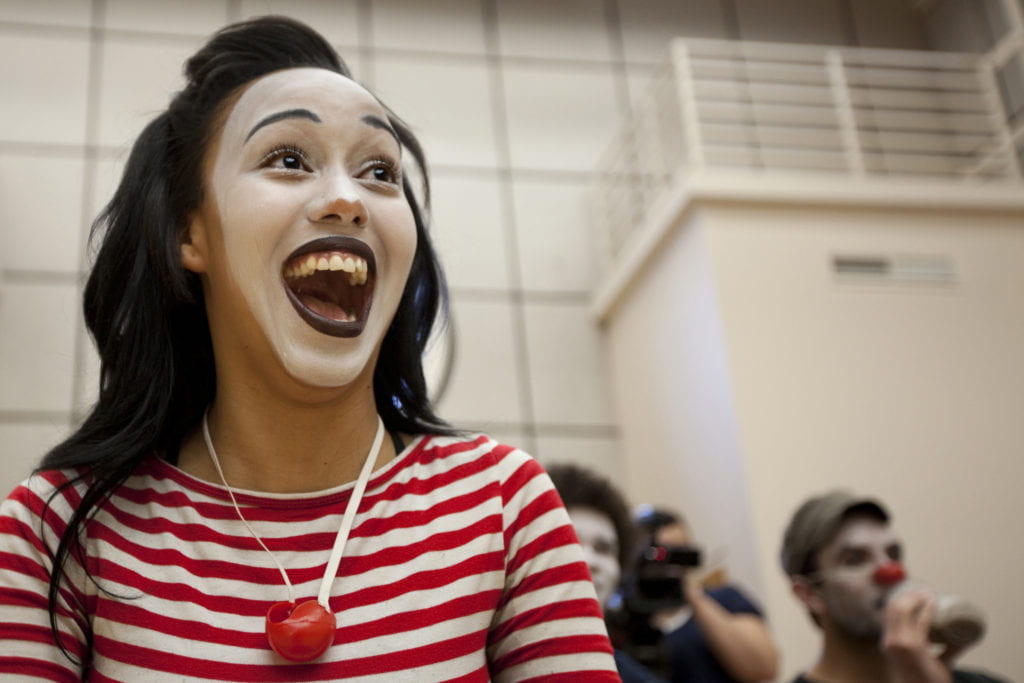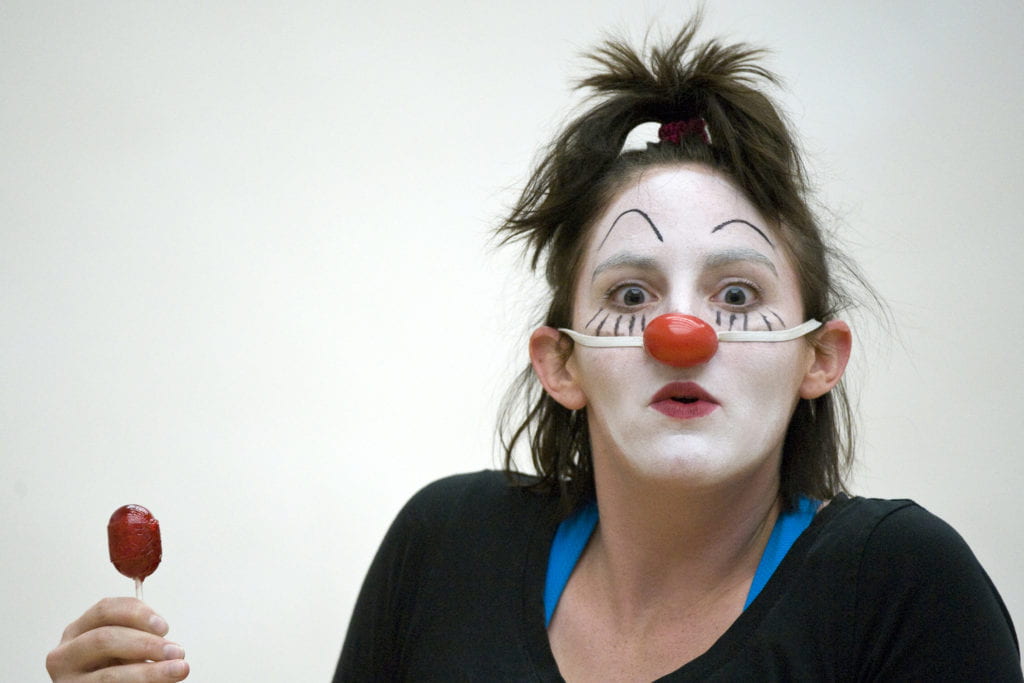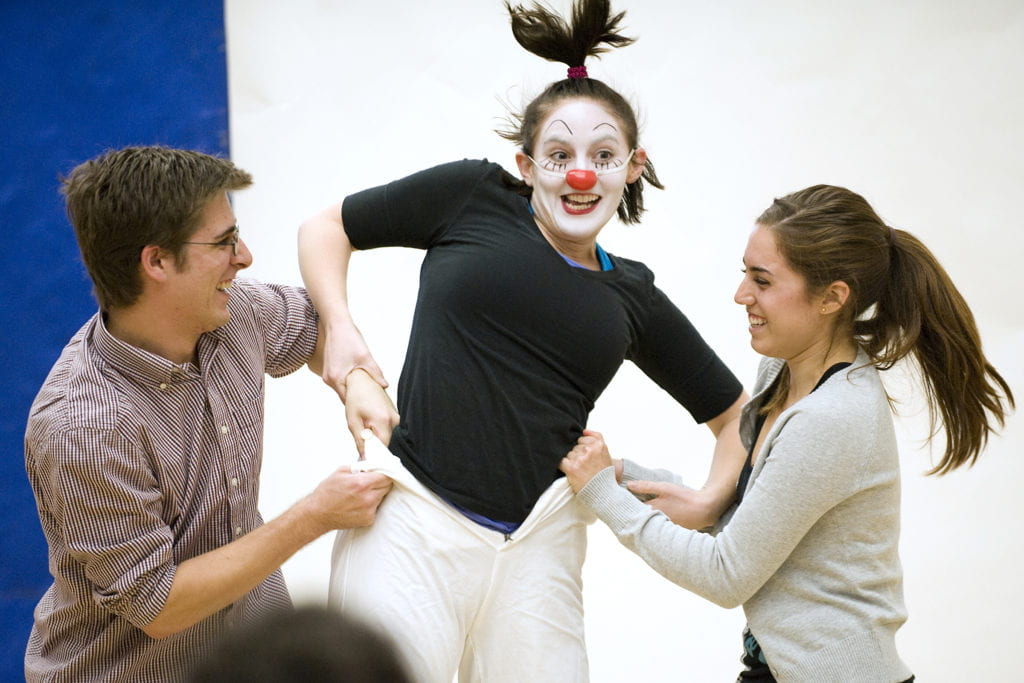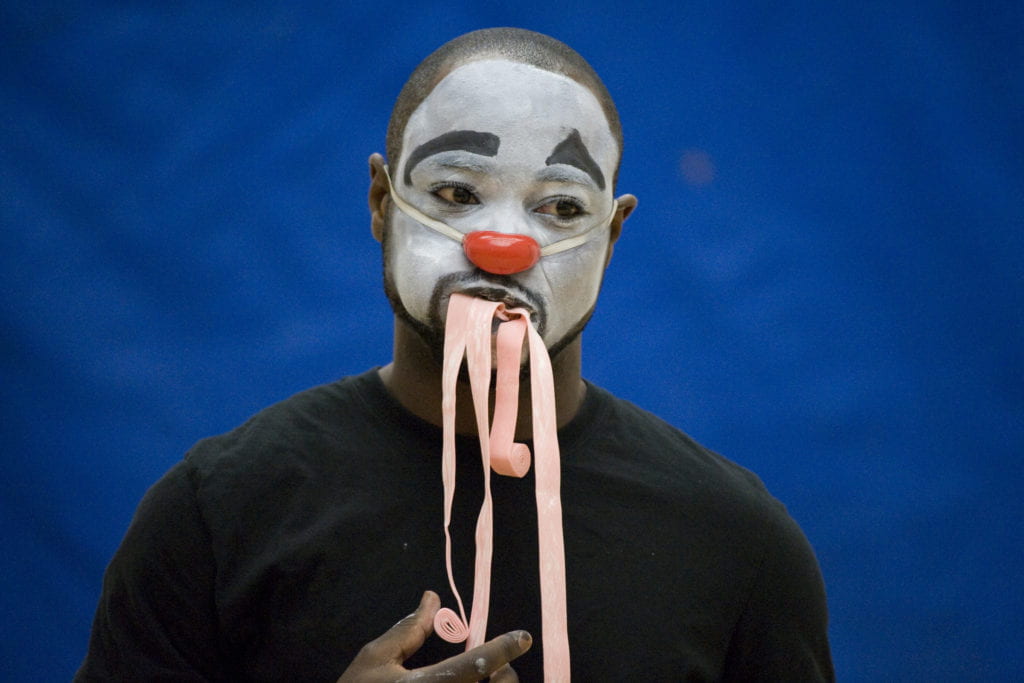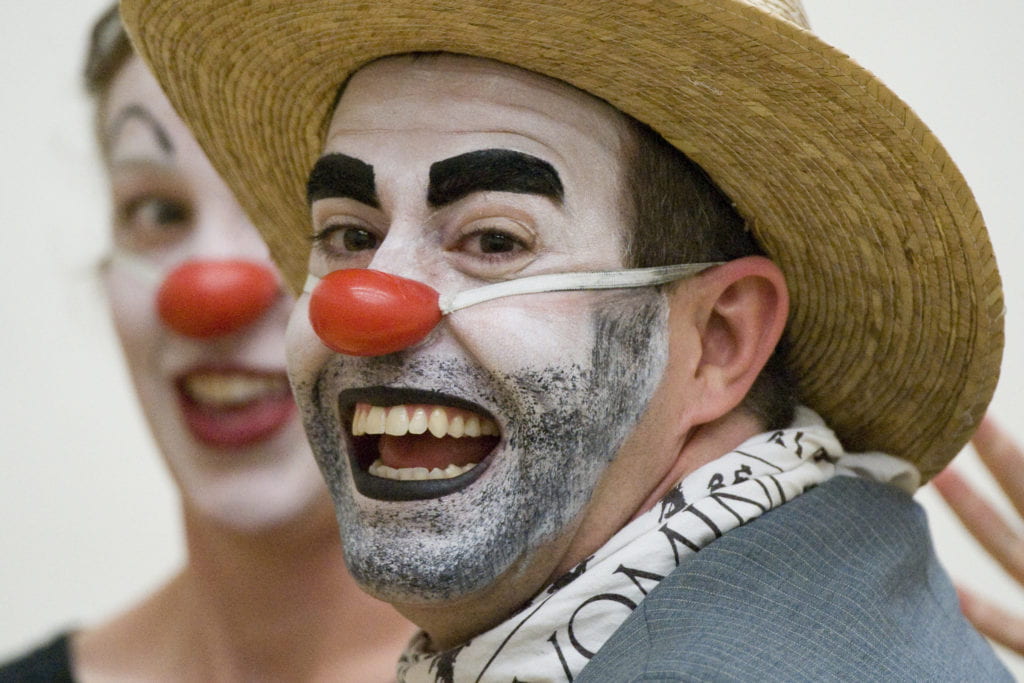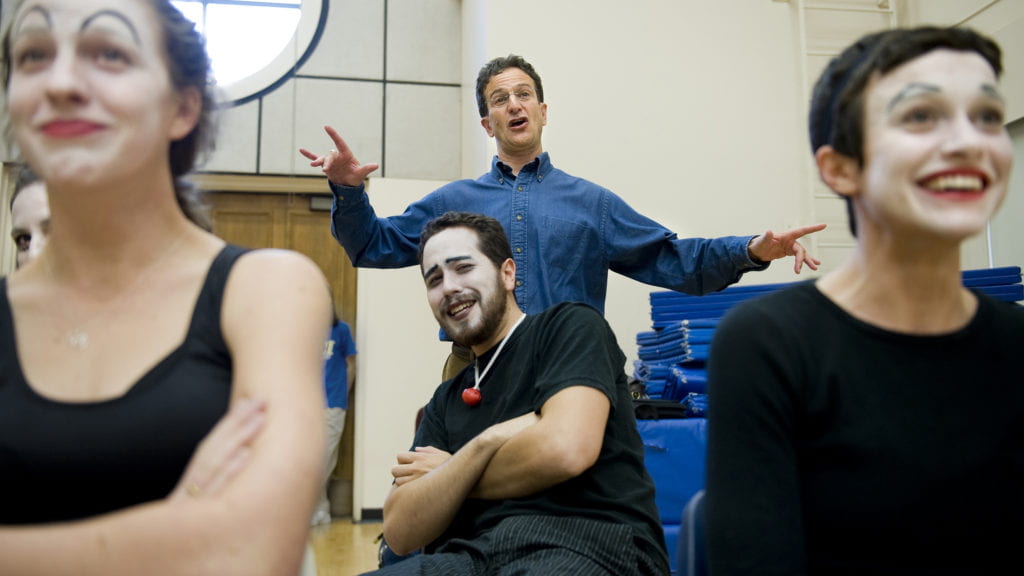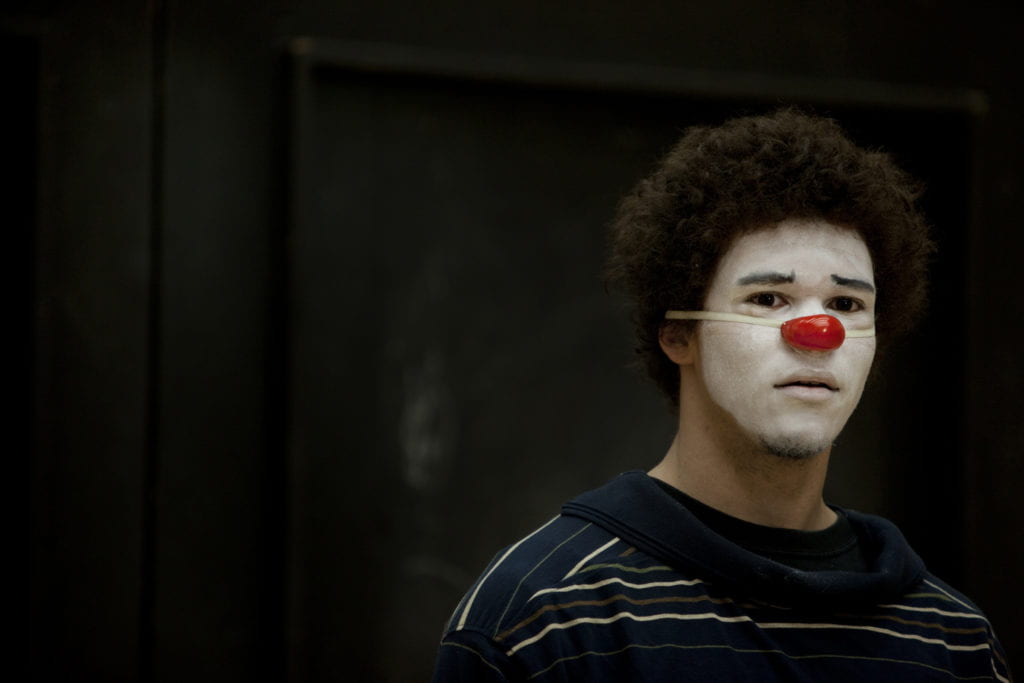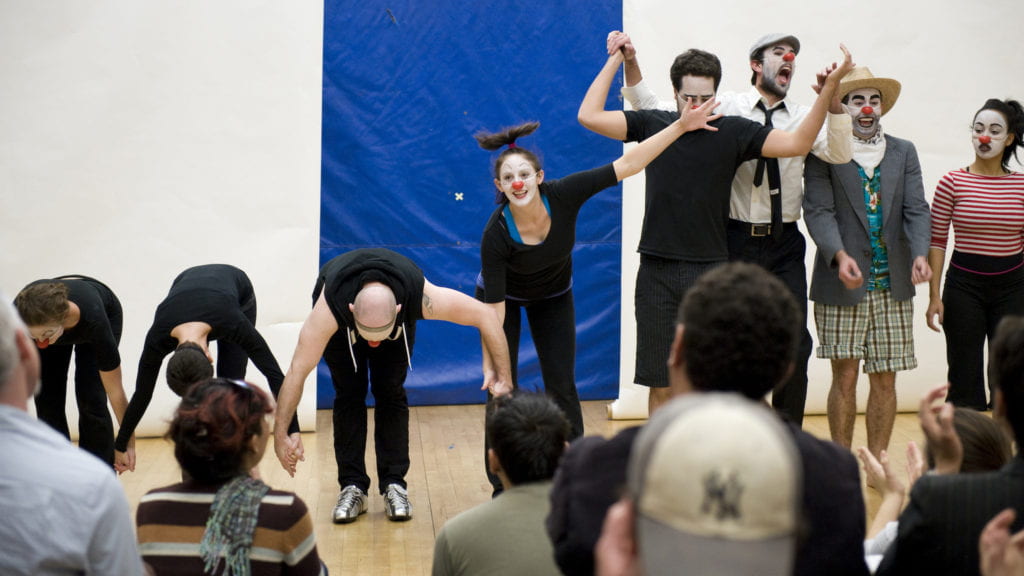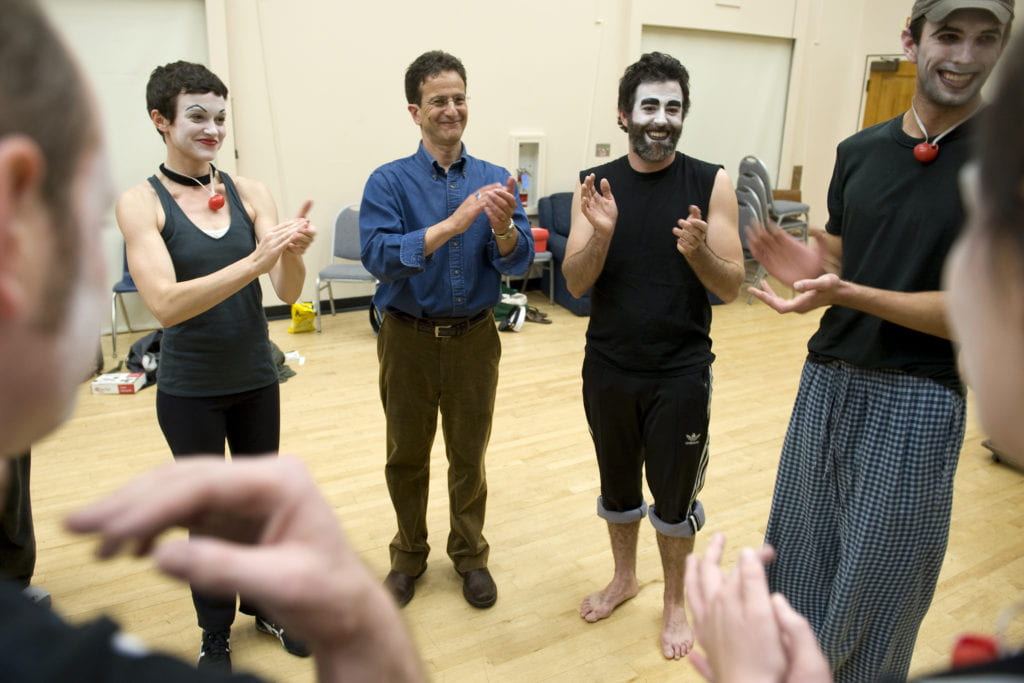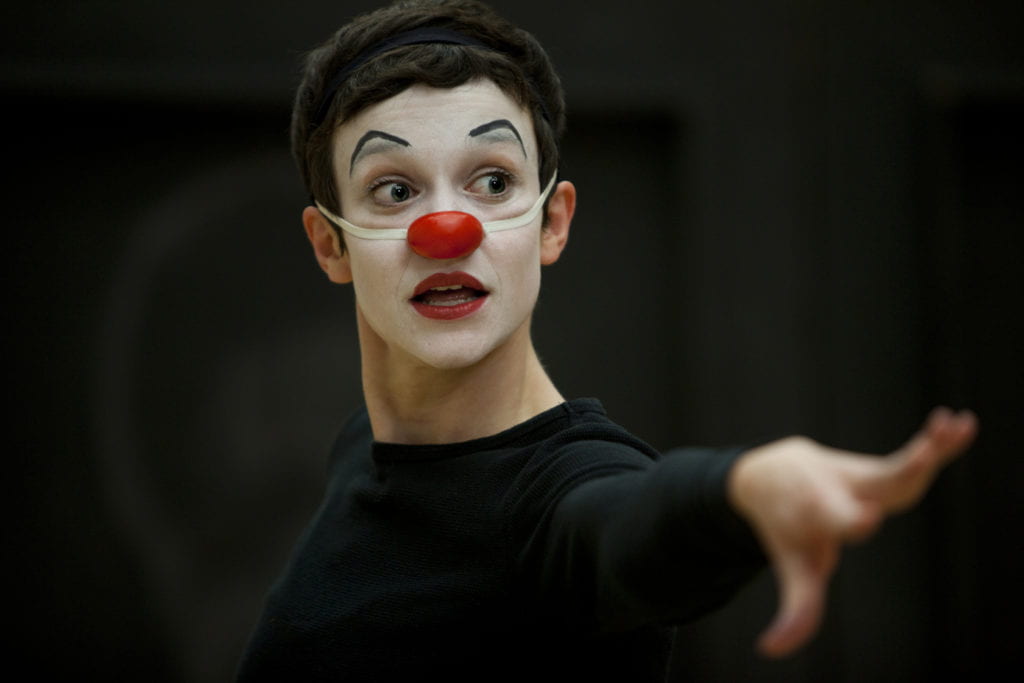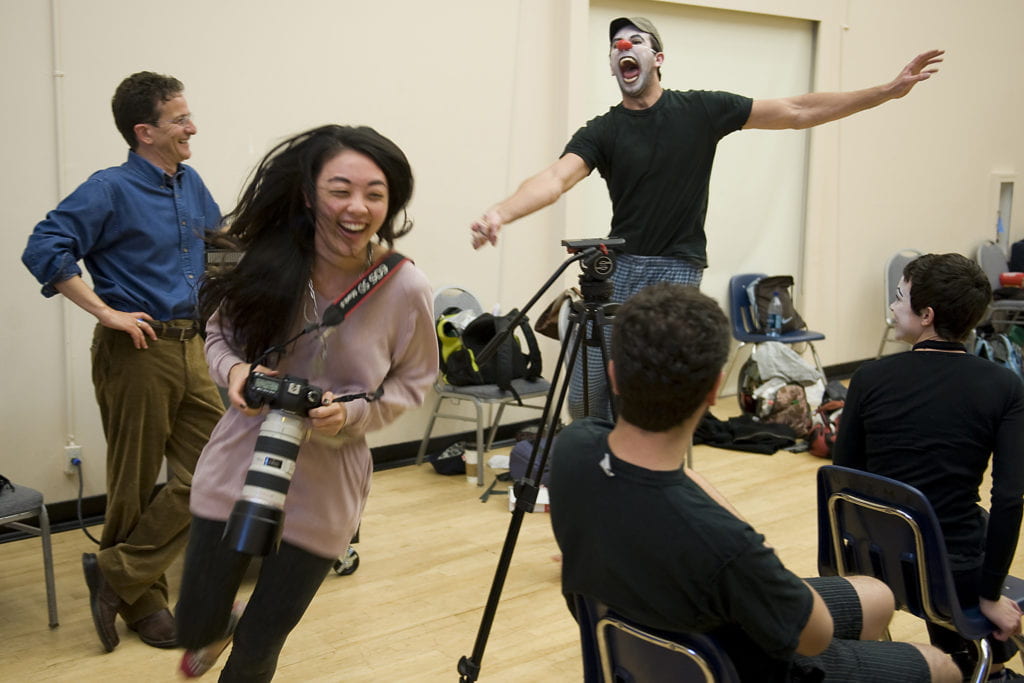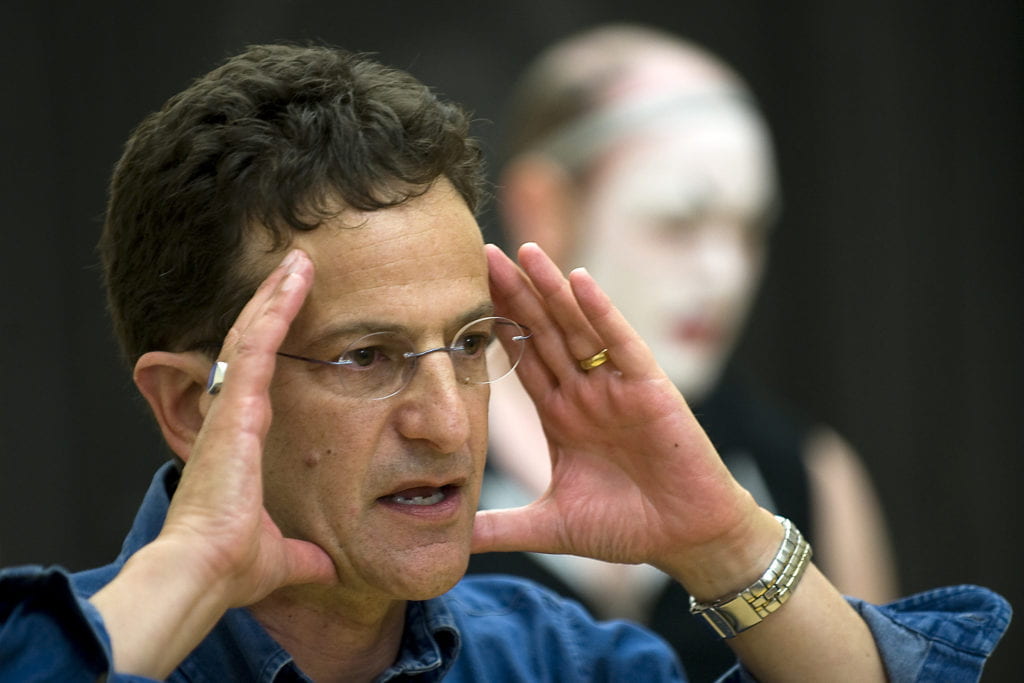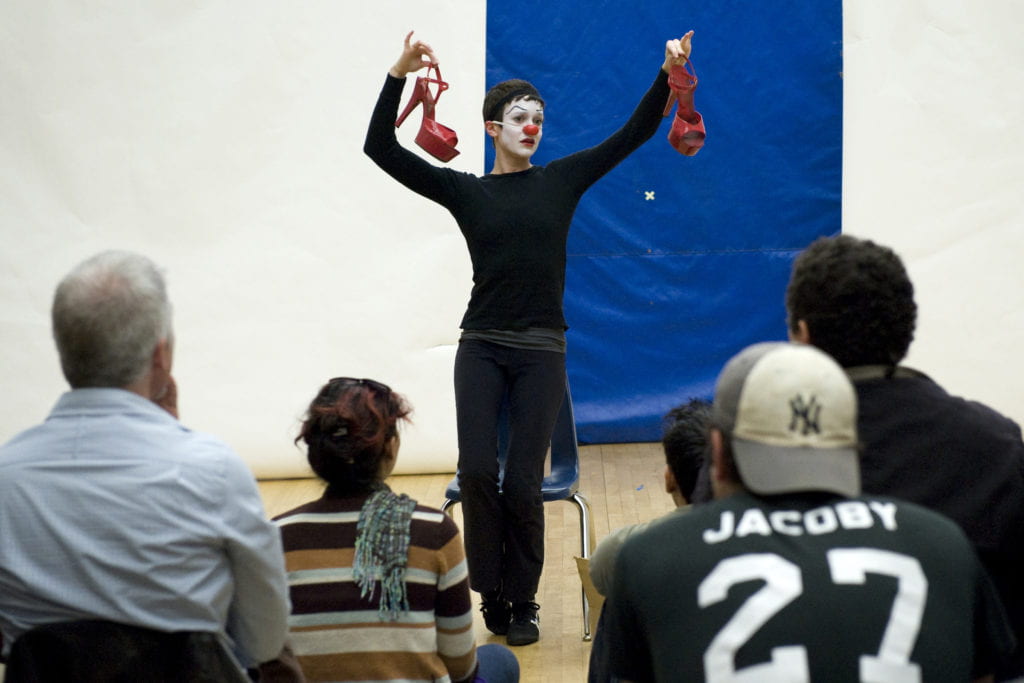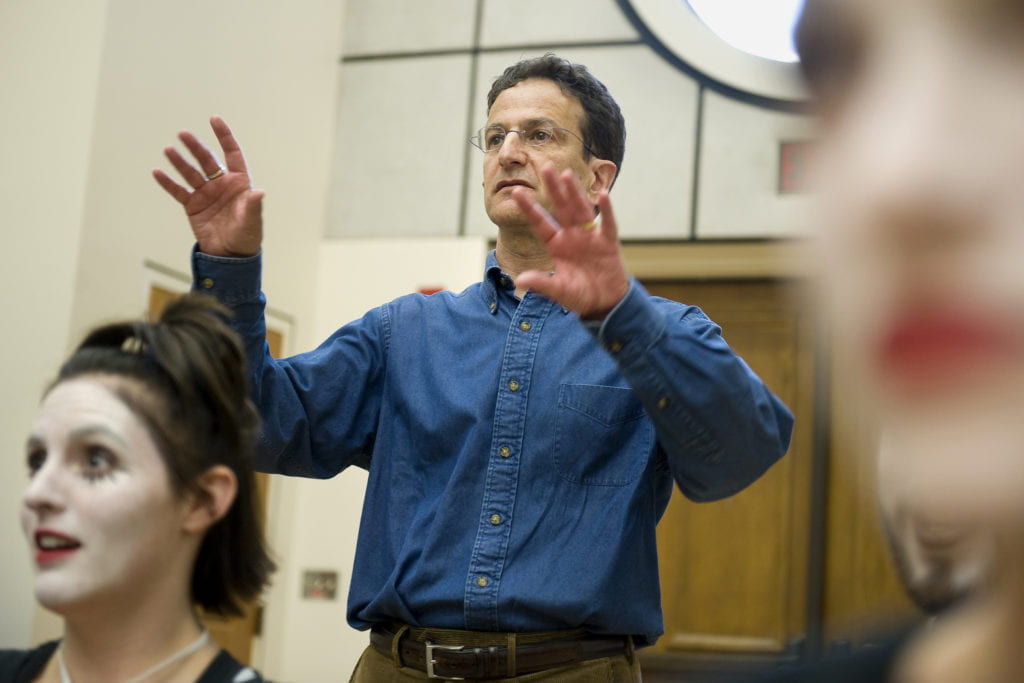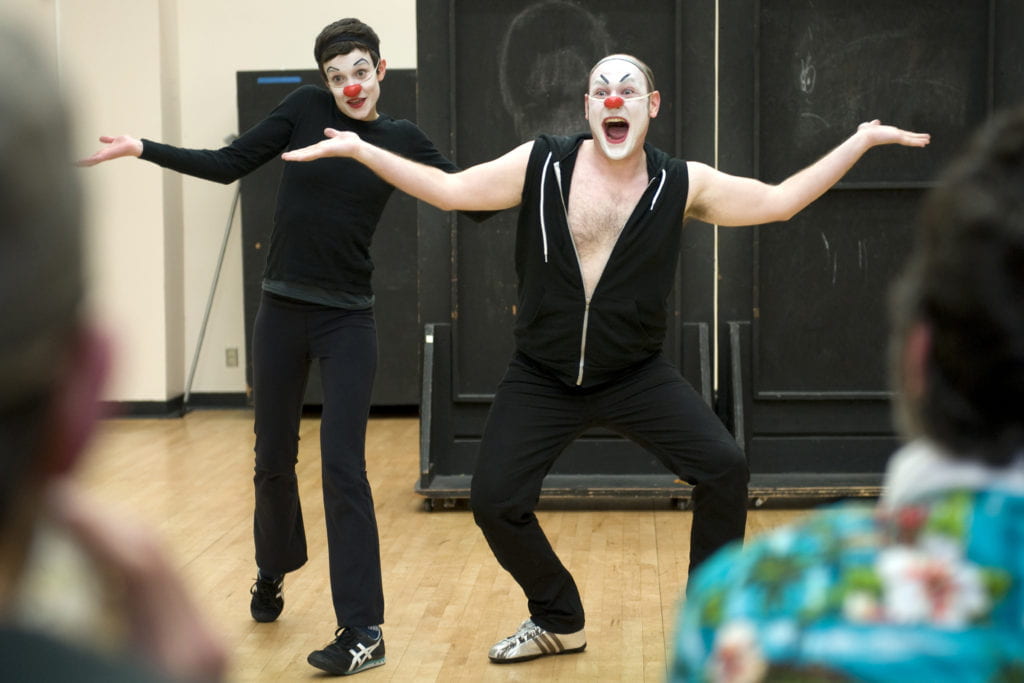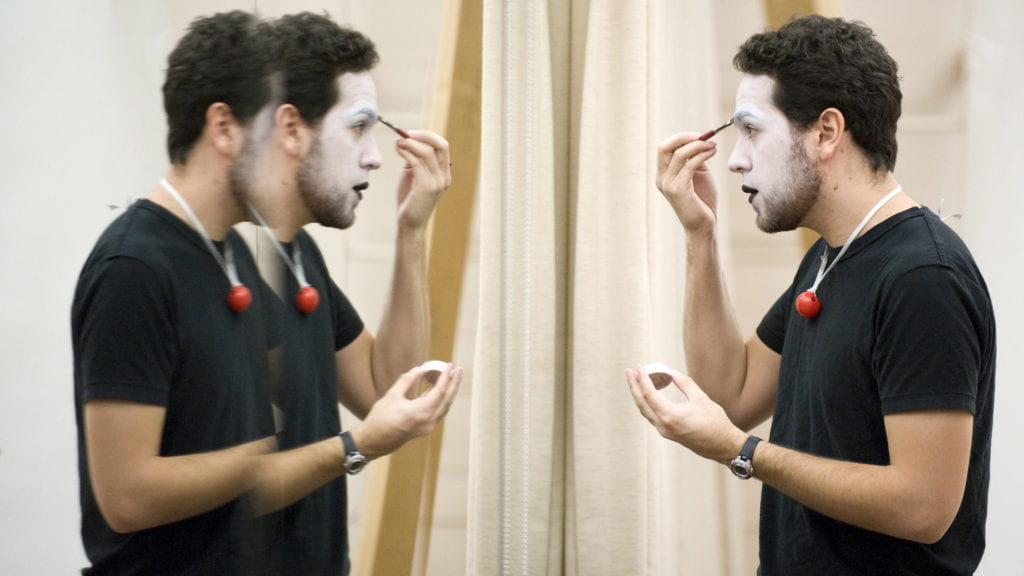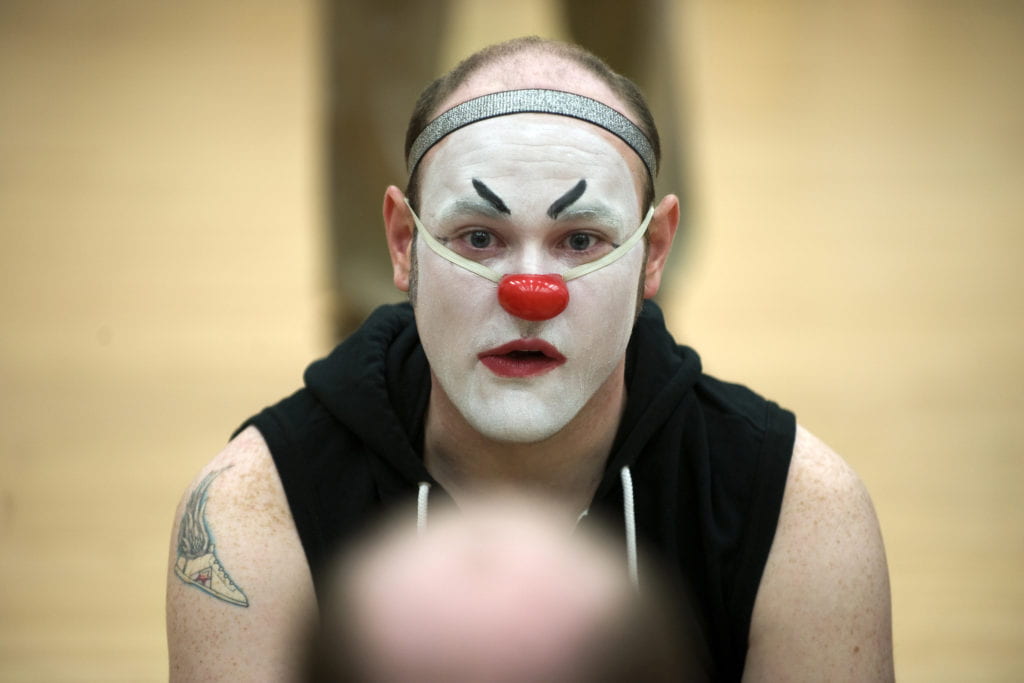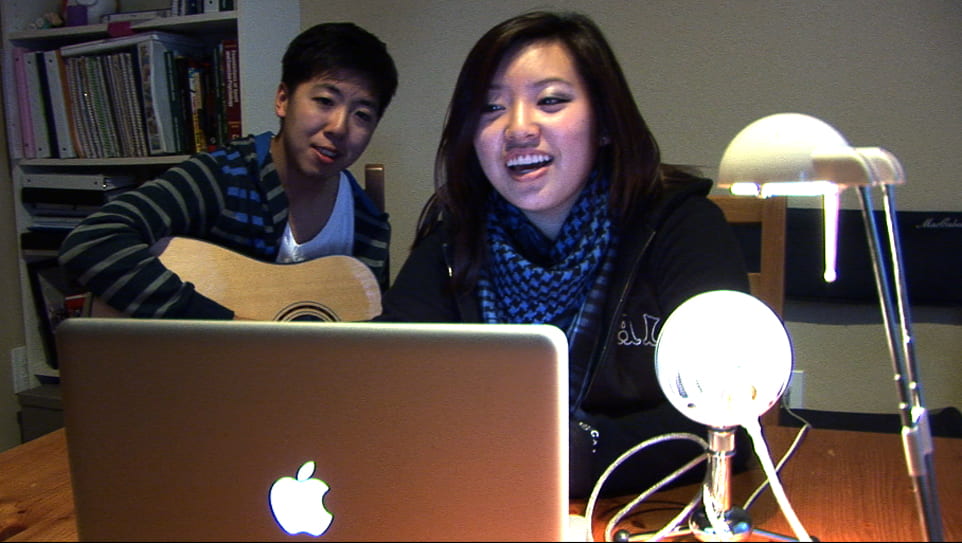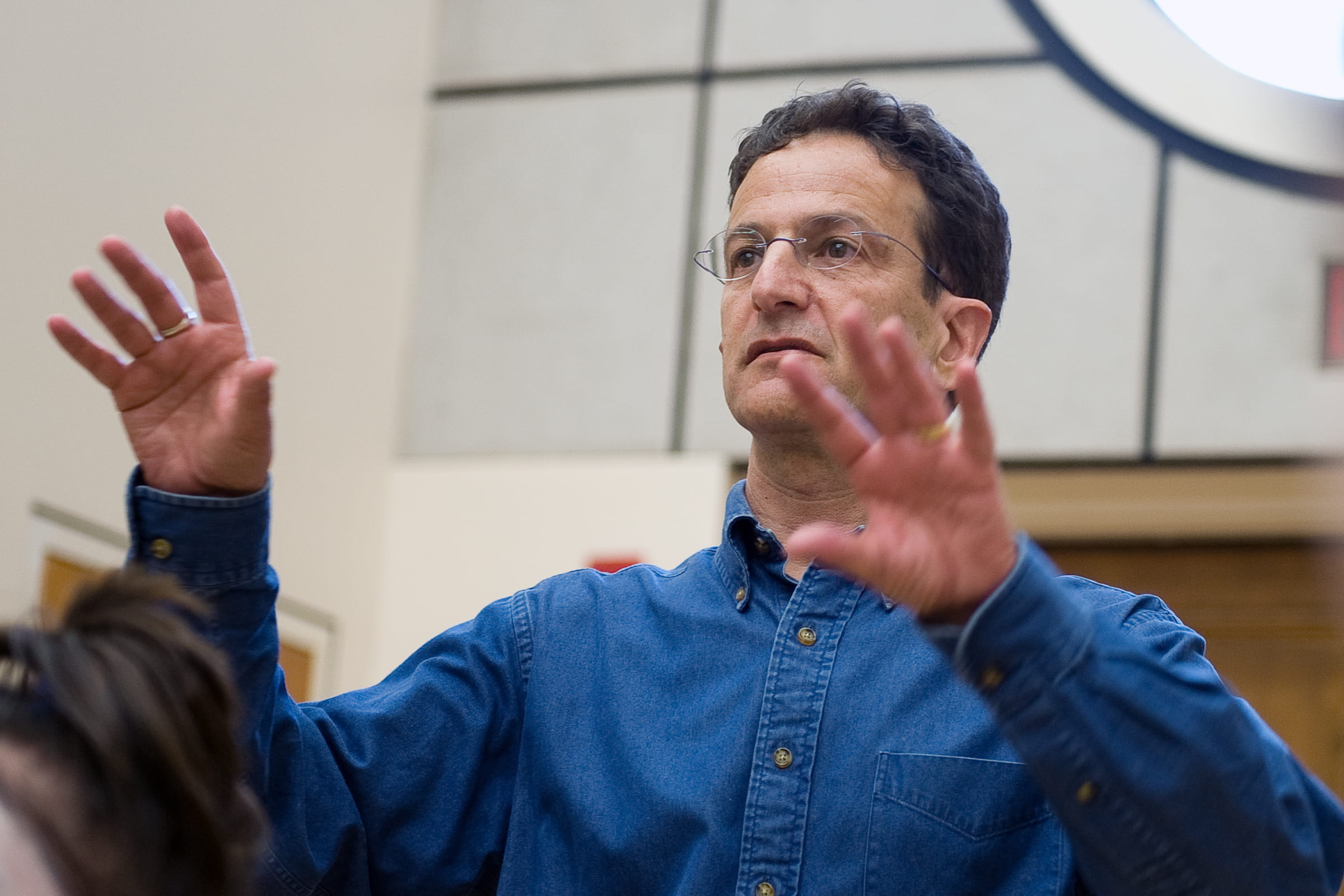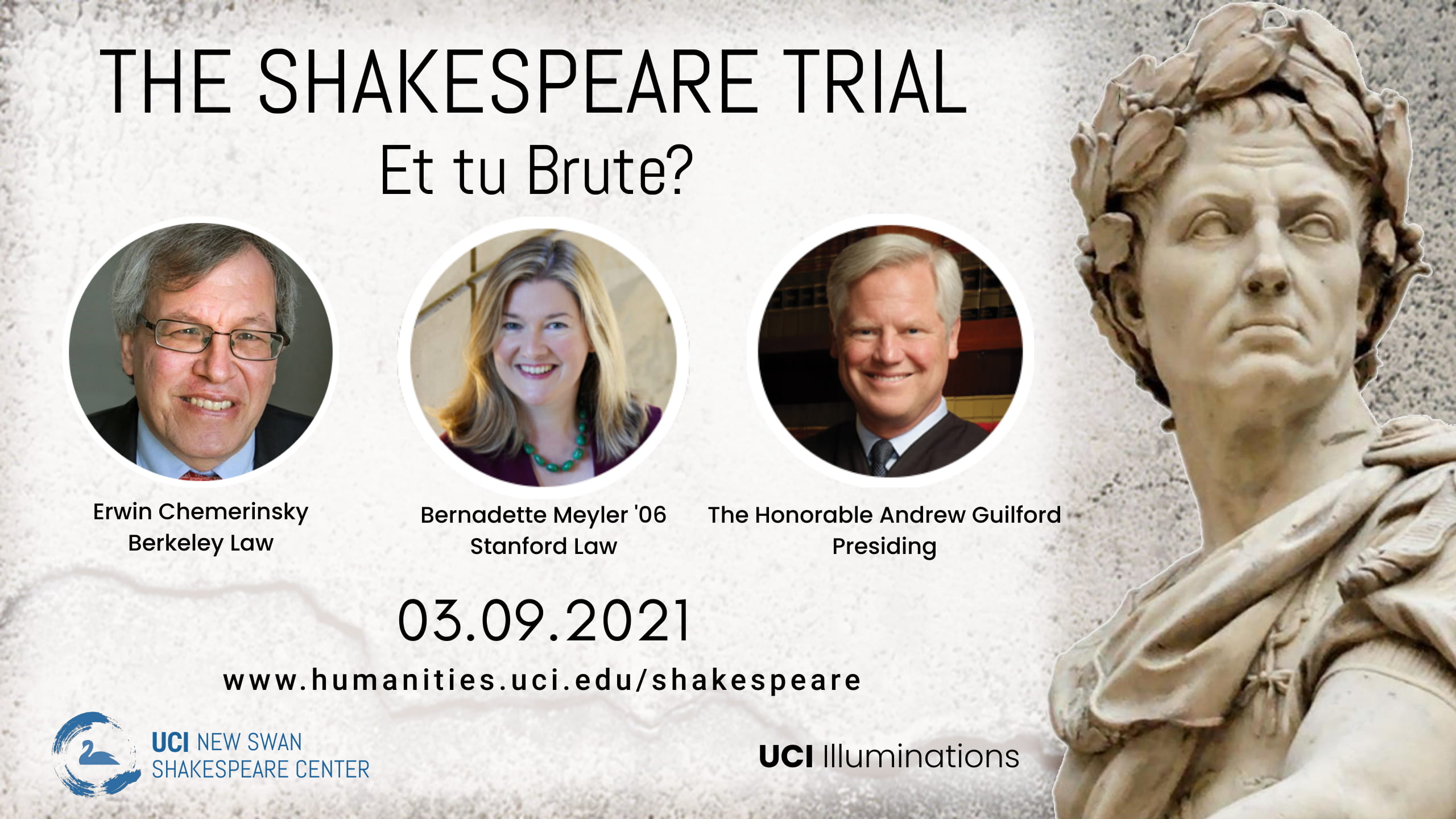Class clowns make good theater
For Eli Simon, drama department chair and professor of acting, clowning is high art.
Each stroke of white makeup transforms a face. Rather than conceal, it reveals. The arch of a painted eyebrow, the exaggerated smile or frown, say more than a monologue. And the metamorphosis isn’t limited to the actor; it’s in the audience’s mind as well. Enter Eli Simon’s world, where clowning is an art.
“Clowning is about the human experience: transformational moments, heartfelt discoveries. That’s what good theater is made of,” says Simon, drama department chair and professor of acting at UC Irvine.
Simon should know. He’s directed classics from Miller to Shakespeare, earning numerous awards and acclaim.
But his heart is with the clowns he teaches. For the past 15 of his 21 years at UCI, Simon has been helping students find their “inner clown.”
“Clowning is a critical component of their training as artists,” he explains. “Their impulses are brought to the fore. Their creative imagination is on fire.”
“We all have a clown living somewhere inside us,” Simon writes in his new book, The Art of Clowning, in which he details his signature clowning techniques.
Visit his clowning class to see the techniques in action, and it’s clear why Simon was twice named Outstanding Teacher in the Claire Trevor School of the Arts (1994 and 2001). The mutual respect is palpable, and the process is collaborative — from the first revelation of a clown’s whiteface to improvisational routines with simple objects or expressive dancing.
“Eli has taught us to be available to the audience — open and vulnerable,” says Mikkei Fritz, graduate student in acting.
“We’re researching the core of comic play,” Simon explains. “It’s not about scripted wit but rather what’s compelling about the human condition.”
He acknowledges it can be a tough sell to audiences. “Most people have a certain degree of clown phobia. But they’ll start off with a chuckle, then laugh at the clowns. Eventually, they laugh with them.”
“When people laugh, their defenses are down, which leads to deep emotion and action,” says Simon. “I try to laugh people into submission.”
He became interested in clowns while researching masking techniques for his first book, Masking Unmasked: Four Approaches to Basic Acting.
Simon identified two fundamental types: in-clowns (confident, talented, popular) and out-clowns (born losers).
This observation inspired his critically acclaimed production “Clownzilla: A Love Story,” which follows two out-clowns and their struggles to find happiness. Simon’s troupe — composed of current and former UCI students — has performed nationally and internationally.
“Because my clowns are silent, they’re universal,” says Simon. “And the play is like the cycle of life. Whether you belong to a group or you’re an outcast, you can find your way — and people who love you.”
He’s proof of that. Raised in a musical family, Simon was first a pianist and percussionist. In college, he played drums in orchestras, as well as jazz and rock bands. “But I kept wanting to put the musicians in nurse uniforms,” he recalls. “So I got kicked out of a lot of bands. I was a musical out-clown.”
“I was thinking theatrically, and I found my place in plays,” Simon says. After earning a bachelor’s in drama at UC Davis and a master’s in acting at Brandeis University, he began directing and teaching. “That was really my calling,” he says. “I have an inherent vision of the big picture.”
He cites Charlie Chaplin, Buster Keaton and Emmett Kelly as influences but adds: “The clowns I work with every day inspire me. It’s a process of discovery — of ‘birthing’ each actor’s inner clown.”
To accomplish this, Simon takes a philosophical approach. “The essential ingredient for improv is a willingness to try,” he says. “You always have to say yes to what happens. The moment you say no, you close off possibilities.”
